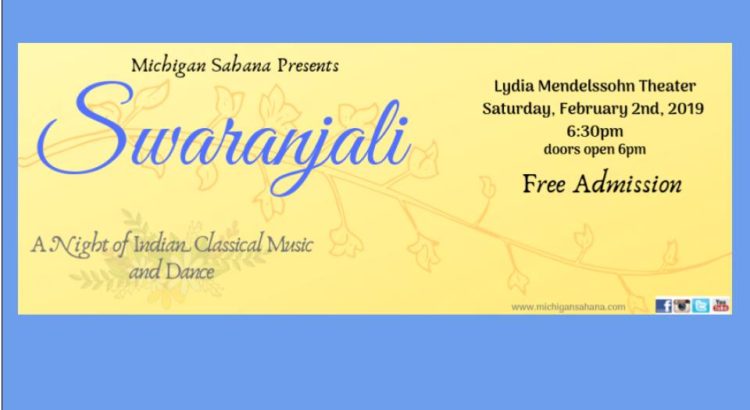This year, Swaranjali was a little more limited in scope than it has been in the past – I believe there were fewer performances than I’ve seen in previous years. However, the performances were, as always, of excellent caliber. Every time I attend a Sahana concert, I find something different to consider as I watch the performance. This time, there were two things that struck me.
First, one of the performances was a Kathak piece, Kathak being one of India’s classical dances. About 15 years ago, I used to take lessons in Bharatanatyam, another Indian classical dance. I’ve seen multiple performances of both styles of dance and others before, yet it was only last night that I consciously registered that there is a difference in the way Bharatanatyam and Kathak dancers hold their hands. The way you hold yourself – what I know from partner dancing as ‘frame’ – is incredibly telling about the feel of a dance. I’m amazed it took me this long to see the distinction, but after having realized this, it was interesting to think that to experienced performers, the difference, of course, must be a night-and-day contrast. And yet Sahana often does performances that blend different styles of music and/or dance, and the way they navigate that blend has never been jarring. I think their performances are stronger for it, and in fact, that was the theme of another dance piece at Swaranjali. This one was first danced in Bharatanatyam, then in Odissi (a third classical dance), and then in a combination of the two. It was incredibly intriguing to see two dancers, each experienced in one style, try the other’s style and manage to put their own spin on it. The performance worked very well, showing that interdisciplinary work often produces the most innovative results.
The second thing that struck me as a result of Swaranjali was the very different air around performances of classical music. In India, classical music seems to flow much more freely between improvisational and structured music. It also seems to have a much more collaborative air (although, not having attended very many jazz concerts, I can’t make an authoritative comparison to jazz). When listening to Indian classical music it always seems like a team effort even if there’s only one person playing at the moment – I think it might come from a general sense on my end that the musicians are all very attuned to each other, and that the music they’re improvising is still stylistically cohesive with the piece they’re playing, both of which I find don’t always happen in other improvisations.
And, of course, there’s a certain joie de vivre about an Indian performance that I’ve never experienced elsewhere. Sahana’s performances always evoke for me that sense of tight-knit belonging, humor, and pride that I feel when I am surrounded by my cultural heritage.


